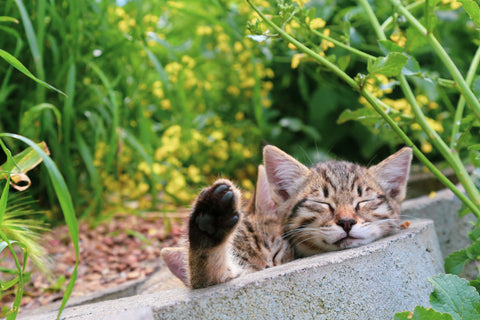What Are Whipworms In Cats?
Whipworms in cats are gut invaders that target the junction of the small and large intestines, known as the cecum. If not addressed, they can harm the intestinal lining, resulting in blood loss and loose stools.
These parasites can spread to felines when they consume food or drink water tainted with feces harboring whipworms or their offspring. Though these infections are not frequently observed in cats, they are more prevalent in canines. While one cat can catch it from another, they don't present a threat to their human caregivers.
Symptoms Of Whipworm Infection In Cats
Luckily, most cat infections are not severe, and often, a feline might not exhibit any signs. A minimal number of worms typically don't lead to major issues. However, significant health problems can emerge when a cat has a high concentration of these parasites. Cats may face intense health challenges or even succumb to the infection in these uncommon situations.
Signs of an intense infection encompass:
- Weight loss
- Anemia (low red blood cell count)
- Dehydration
- Bloody diarrhea, with or without mucus
- General malaise
Whipworms reside in the large intestine and the cecum, making them hard to detect with the unaided eye. Their eggs are too tiny to be seen without magnification.
Causes Of Whipworms In Cats
Whipworms inhabit fecal debris, potentially polluting food, water, or other objects like toys or fellow felines. This is a typical way for cats to contract the infection. Whipworm eggs can endure in their surroundings for an extended period and are commonly consumed due to self-cleaning habits or when sharing a common litterbox or outdoor space.
After landing on the soil, these eggs ripen and turn infectious roughly in three weeks. If ingested, they sprout, evolve into mature worms, pair up, and procreate. Approximately 12 weeks later, the female releases eggs, perpetuating the cycle.
Diagnoses Of Whipworm Infection In Cats
Considering the lifecycle and the sporadic and limited shedding of eggs, multiple tests and samples are often needed to pinpoint a diagnosis. Even if the test results don't specifically identify whipworms in your cat, treatment for parasitic infections may still be advised. Methods for detecting whipworm encompass:
- Fecal flotation with centrifugation: Often used for detecting parasitic infections, this method involves mixing feces with a solution. After centrifugation, the sample is inspected under a microscope for egg presence.
- Fecal antigen test (ELISA): This technique assesses fecal samples for whipworm antigens (molecules the worm releases that provoke an immune reaction). It's frequently valuable in spotting infections at preliminary stages.
- PCR Testing: Employing genetic material to discern a specific parasite, this method is used when whipworm presence is suspected but not definitively identified. For this evaluation, fecal specimens are forwarded to a specialized lab for analysis.
Treatment Of Whipworms In Cats
Treatment is reasonably priced and straightforward. Oral anti-parasitic drugs like Panacur (fenbendazole) are commonly recommended for several days or more, depending on the need.
Recovery Of Whipworms In Cats
Ensuring your cat is free from the infection after treatment is crucial. Therefore, it's recommended to recheck your cat's fecal sample a few weeks post-treatment. If your feline ventures outdoors, clean her paws to reduce the risk of consuming whipworm eggs.
Currently, there aren't any monthly preventatives for whipworm, so the initial line of defense starts with maintaining cleanliness and proper sanitation at home.
- Dispose of fecal waste daily and disinfect the litterbox routinely.
- Limit your cat's outdoor explorations and interactions with potentially infected animals.
- Consistent pest management and household cleanliness are beneficial, such as taking off shoes when entering.
Whipworm Prevention in Cats To mitigate the risk of whipworm infection, it's essential to clear out feces every day and frequently sanitize the litterbox using a diluted bleach solution. For those cats that spend time in the yard, ensure fecal debris is removed. Exposure of the yard area to direct sunlight can further aid in prevention.
FAQs On Whipworms In Cats
Can humans contract whipworms from cats?
No, a cat infected with whipworms doesn't transmit the infection to humans. Whipworms are specific to their hosts, making them contagious only among felines.
How can an indoor cat contract whipworms?
The source of whipworms is often fecal debris, which a cat might unintentionally consume. Many cats get infected due to their grooming habits. Moreover, it's plausible for whipworm eggs to be carried indoors on the clothing or shoes of family members. It's also essential to remember that cats have innate hunting instincts and might prey on household pests like insects and rodents. Consuming these pests, which might carry parasites, can lead to infections.
How can one identify a whipworm?
Whipworms derive their name from their distinctive whip or rope-like structure. They can grow up to five centimeters, with their tail end being more robust and broader than their front end. The eggs of the whipworm are minute, resembling tiny footballs, and have a dense shell with plugs on both sides. They usually range in color from shades of yellow to brown.







